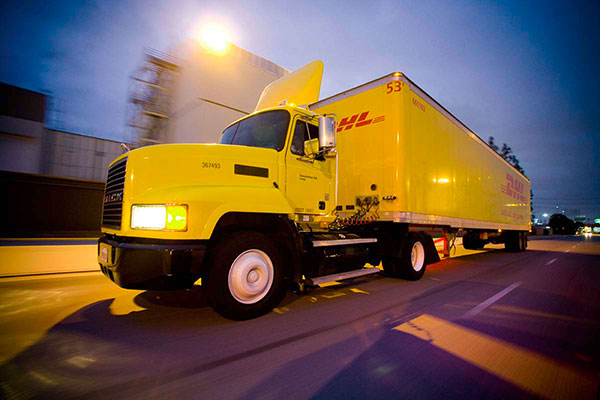How to Solve the Digital Transportation Puzzle
Transportation is a critical component of the supply chain, and digitalization is emerging as a valuable means to improve visibility and cost. But how do you know where to invest to see the maximum return?

Digitalization represents the next frontier in supply chain optimization. The foundation for this continuing evolution is already in place through the software platforms that control the flow of inventory within distribution centers (WMS) and digitize transportation processes (TMS).
Now, the opportunity exists to build on this foundation to further reduce costs and improve service levels while enabling the visibility required to optimize performance
When focusing on the movement of goods, transportation management systems (TMS) provide the engine for digitalization, but do not represent a complete digitalization solution. Organizations that deploy a TMS hoping to resolve all of their transportation challenges may be disappointed. Complementary software and deep transportation expertise are required to achieve true real-time visibility and optimize capacity utilization.
Supplementing the TMS
One of the areas where a stand-alone TMS system may fall short of expectations is in capacity optimization, particularly when managing dedicated or private fleets subject to empty return trips. A fleet management solution integrated with a TMS can reduce empty miles and identify opportunities for load consolidation from LTL to FTL at the same time. While adding a layer of complexity to transportation management, this approach can drive significant improvements in capacity utilization that more than offset the additional challenge of managing multiple platforms.
The DHL Dynamic Decision Transportation Optimizer, an internally developed Big Data tool, can be applied to optimize shipments daily. This solution compensates for areas where TMS systems are not strong, such as optimizing dedicated fleet and common carrier decisions to maximize the daily capacity carried on the dedicated fleet. The tool is also more effective at managing continuous moves and enables historical data to be used to support decision making.
Dedicated business intelligence tools also enhance the capabilities of a TMS. The business intelligence tools integrated into even the best TMS platforms are generally insufficient for full-scale transportation analytics. Dedicated BI tools are better equipped to support advanced modeling and forecasting to ensure capacity is available when and where needed.
Closing Visibility Gaps
Visibility is another area where TMS platforms may not deliver expected results. In our experience, achieving full visibility across transport is best accomplished by integrating a dedicated visibility solution with the TMS. These solutions, when properly executed, can eliminate blind spots in the transportation processes that can result from miscommunication at delivery docks or carrier transport data that doesn’t align with planned routes.
However, it’s important to recognize that even these platforms don’t solve the visibility challenge unless integration with carriers is given adequate attention. While many carriers now provide the ability to connect for real-time visibility, different carriers use different means of connection. Accommodating the variety of ways carriers are making data available and effectively integrating with all carriers in your network is essential to achieving full visibility.
We’ve found the best approach is to develop an integration hub rather than integrating carriers directly with the TMS or visibility platform. It's a more flexible and scalable approach.
We work with our carriers to understand their technological capabilities, current connections, and preferences for real-time tracking. Active carrier management is also required to ensure carriers are delivering data to you when they are carrying your freight, instead of delivering data to the organization whose load they carried before yours.
Mitigating Risk
The final piece of the transportation puzzle is risk mitigation. Having visibility into potential disruptions in the supply chain, whether caused by political turmoil, natural disasters or pandemics, is more important than ever.
DHL’s Resilience360 is an innovative supply chain risk management software platform that helps businesses predict, assess and mitigate the risk of supply chain disruptions.
Resilience360’s risk mitigation tools provide businesses with the information they need for supply chain visualization, trade compliance and real-time monitoring of incidents that have the potential to disrupt the supply chain. Integrating such a tool with your TMS can identify which shipments will be impacted by a disruption and quickly identify options to minimize impact to manufacturing plants and customer deliveries.
Managing Increasingly Complex Transportation Technology Requirements
From managing integration with carriers to integrating the various technology systems required today, optimizing transportation requires a high degree of expertise as well as specialized resources.
At DHL Supply Chain we’ve made the investments in technology and people to bring together the necessary solutions to deliver full visibility, improved asset utilization and reduced costs. We also continue to actively evaluate emerging transportation technologies and apply new solutions as they become viable.
For more information on how DHL is helping its customers accelerate digitalization across the supply chain, visit http://app.supplychain.dhl.com/e/er?s=1897772577&lid=6259

Article Topics
Columns News & Resources
A new day at the post office Despite small decline, Services economy remained strong in April, reports ISM U.S. Senate signs off on confirmation of two new STB Board members Moore On Pricing: The business case for transportation management How to Solve the Digital Transportation Puzzle Process and technology in balance Cold Chain and the USPS Crisis More ColumnsLatest in Logistics
LM Podcast Series: Assessing the freight transportation and logistics markets with Tom Nightingale, AFS Logistics Investor expectations continue to influence supply chain decision-making The Next Big Steps in Supply Chain Digitalization Warehouse/DC Automation & Technology: Time to gain a competitive advantage The Ultimate WMS Checklist: Find the Perfect Fit Under-21 driver pilot program a bust with fleets as FMCSA seeks changes Diesel back over $4 a gallon; Mideast tensions, other worries cited More LogisticsSubscribe to Logistics Management Magazine

Find out what the world's most innovative companies are doing to improve productivity in their plants and distribution centers.
Start your FREE subscription today.
April 2023 Logistics Management

Latest Resources














